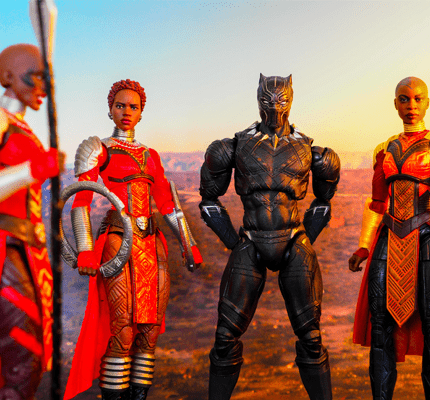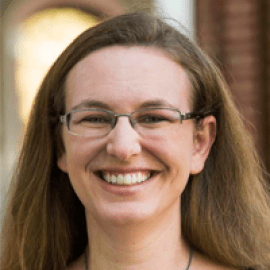
Queer Erasure in Black Panther
When Black Panther was released in February 2018, it immediately made waves for its representations of Black and African experiences. However, Black Panther also included some notable omissions. In a new article in Review of Communication, Michaela D. E. Meyer examines how a queer relationship was excluded from Black Panther. This is not the first time LGBTQ+ people have been excluded from Marvel films, but the omission is notable because of the Black Panther characters’ relationship in the comic books.
In the comic book runs of Black Panther and World of Wakanda, women warriors Ayo and Aneka have a romantic relationship. Both are members of the Dora Milaje, an elite group of women warriors who serve as special forces for the fictional country Wakanda, in which the film and comic book storylines take place. Ayo is portrayed as second-in-command of the Dora Milaje but does not play a major role in the film. Aneka is entirely absent from the film.
According to Meyer, “In April 2017, Vanity Fair reported on a leaked scene between Okoye and Ayo wherein they lock eyes, Okoye says, ‘You look good,’ and Ayo responds with a grin saying, ‘I know.’” The scene featured Okoye, instead of Aneka, but was interpreted by fans as an acknowledgment of Ayo’s queer identity. However, the scene did not make the final cut of the film. This exclusion and the lack of any other acknowledgment of Ayo’s identity led fans to use the hashtag #LetAyoHaveAGirlfriend to speak out against Ayo’s erasure.
Meyer argues that despite other positive representations within Black Panther, the film excludes queer identities, thus reinforcing heteronormativity and homophobia. Furthermore, Meyer writes, the exclusion “echo[es] the violation of human rights and real, lived experiences of Black LGBTQ populations.” The lack of representation is especially troubling because the larger universe of Marvel films has focused on white characters, particularly men. In some ways, the biases toward white superheroes mimic the focus of Marvel comic books, the majority of which feature white, straight, men as protagonists. However, from their inception, comic books have been written or read in subversive ways. For example, audiences have read some characters, such as Rogue from X-Men, as queer, even when they were not written that way.
The larger Marvel Cinematic Universe (MCU) has not included queer characters or represented characters as queer, even when their identity was clear in the comic books. Valkyrie, an Asgardian woman warrior from the Thor comics, is depicted as bisexual in the comic books. Yet, when Valkyrie was depicted in Thor: Ragnarok (2017), scenes that acknowledged the character’s bisexuality were cut, just as Ayo and Okoye’s scene was cut in Black Panther. Similarly, although Valkyrie also appeared in Avengers: Endgame (2019), no mention was made of the character’s sexual identity.
Meyer notes that, aside from Black Panther, the MCU has also sidelined storylines about characters of color. For example, Ms. Marvel, also known as Kamala Khan, is a Muslim Pakistani-American character that originated in the Captain Marvel comic books and is the main character in the Ms. Marvel comic books. Although Captain Marvel was the focus of a 2019 Marvel film, that film was adapted from a Captain Marvel comic book series that did not include Ms. Marvel. Khan has not been included in any current MCU films. Similarly, Miles Morales, a Black Latino character who is depicted as one version of Spider-Man, was the focus of the animated movie, Spider-Man: Into the Spider Verse (2018). But Morales has not been depicted in the larger MCU, which instead focuses on Peter Parker, who is portrayed by a young white man.
Meyer argues that the erasure of Ayo’s identity and the omission of Ayo from the film demonstrate the ways in which Black Panther fails to depict intersectional identities and foregrounds racial identity over sexuality. In doing so, Meyer writes, Black Panther makes strides in particular representations of Blackness while also reinforcing heteronormativity and homophobia.


